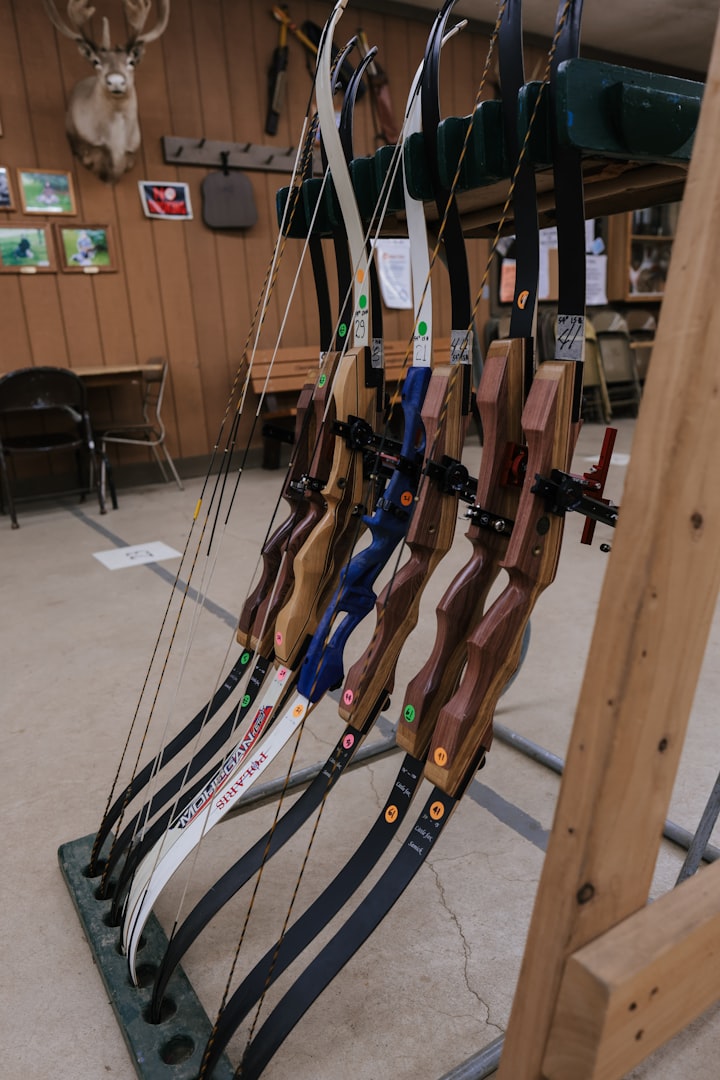A Beginners Guide to Virtual Reality Headsets for Gamers and Hobbyists
Here’s an introduction and explanation of five types of VR headsets.

In a recent post titled This Is How Virtual Reality Might Be the Future of Gaming, I introduced VR technology and spoke about the potential future for gaming using it.
Today, I will introduce several VR headsets used for various purposes for beginners. You can check details on vendors’ websites.
What is a VR Headset?
A VR headset is a device worn on the head that displays a virtual reality environment to the user.
The user’s head movements are tracked, allowing them to look around the virtual environment as if they were actually inside it.
VR headsets often include built-in headphones for audio and may have additional features such as hand controllers for interactivity.
They are commonly used in gaming, simulation, and other immersive experiences.
What are the different types of VR headsets?
There are several different types of VR headsets currently available, including:
1 — Tethered VR headsets
These headsets are connected to a computer or gaming console by a cable. They offer the highest-quality graphics and the most immersive experiences, but the cable length limits the user.
2 — Standalone VR headsets
These headsets do not require a connection to a separate device and have all the necessary components built-in. They are more portable and offer more freedom of movement, but the graphics and processing power may not be as advanced as tethered headsets.
3 — Mobile VR headsets
These headsets use a smartphone as the display and processing device. They are the most affordable and portable option, but the smartphone's capabilities limit the graphics and processing power.
4 — Hybrid VR headsets
These headsets combine the features of tethered and standalone VR headsets and can be used with or without a PC.
5 — AR/MR (Augmented Reality/Mixed Reality) Headsets
These headsets overlay virtual objects and information on the real-world environment, the user can see the real-world environment and the virtual objects simultaneously.
Here are some examples of VR headsets that fit into each category listed above.
1 — Tethered VR headsets
Oculus Rift
Developed by Oculus VR (now owned by Facebook), the Oculus Rift features a resolution of 1080x1200 per eye, a 90Hz refresh rate, and built-in headphones for 3D audio.
HTC Vive
Developed by HTC and Valve Corporation, the HTC Vive features a resolution of 1080x1200 per eye, a 90Hz refresh rate, and built-in headphones for 3D audio. It has motion controllers and base stations that track the user’s movements in a 15 x 15 feet area.
Windows Mixed Reality
Developed by Microsoft, Windows Mixed Reality headsets are compatible with Windows 10 and feature a resolution of 1440x1440 per eye, a refresh rate of 90Hz, and built-in headphones for 3D audio. It also comes with motion controllers.
Valve Index
Developed by Valve Corporation, Valve Index features a resolution of 1440x1600 per eye, a refresh rate of 120Hz, and built-in headphones for 3D audio. It has motion controllers and base stations that track the user’s movements in a 15 x 15 feet area.
Pimax
Developed by Pimax, Pimax VR headsets feature a resolution of 4K, a refresh rate of 90Hz, and built-in headphones for 3D audio. It also comes with motion controllers.
2 — Standalone VR headsets
Oculus Quest
Developed by Oculus VR (now owned by Facebook), the Oculus Quest features a resolution of 1440x1600 per eye, a 72Hz refresh rate, and built-in speakers. It can also be connected to a PC using a USB-C cable for a better experience.
Oculus Go
Developed by Oculus VR (now owned by Facebook), the Oculus Go features a resolution of 1280x1440 per eye, a refresh rate of 60Hz, and built-in speakers.
Lenovo Mirage Solo
Developed by Lenovo, the Mirage Solo features a resolution of 2560x1440, a refresh rate of 75Hz, and built-in speakers.
Pico Neo 2
Developed by Pico Interactive, the Pico Neo 2 features a resolution of 2560x1440 per eye, a refresh rate of 72Hz, and built-in speakers.
Nreal Light
Developed by Nreal, the Nreal Light features a resolution of 1080 x 720 per eye, a refresh rate of 72Hz, and built-in speakers.
3 — Mobile VR headsets
Samsung Gear VR
Developed by Samsung in partnership with Oculus VR, the Gear VR is compatible with select Samsung smartphones and features a resolution of 1080x1920 per eye, a refresh rate of 60Hz, and a built-in touchpad and back button for controls.
Google Daydream View
Developed by Google, the Daydream View is compatible with select Android smartphones and features a resolution of 1080x1920 per eye, a refresh rate of 60Hz, and comes with a wireless controller.
Google Cardboard
Developed by Google, Google Cardboard is a low-cost, basic VR headset that is compatible with most smartphones. It is made of cardboard and features a simple lens system and a head strap.
Merge VR
Developed by Merge, Merge VR is a durable and comfortable mobile VR headset that is compatible with most smartphones. It features a simple lens system and a head strap.
Homido VR
Developed by Homido, Homido VR is a mobile VR headset that is compatible with most smartphones. It features a simple lens system and a head strap.
4 — Hybrid VR headsets
Oculus Quest 2
Developed by Oculus VR (now owned by Facebook), the Oculus Quest 2 features a resolution of 1832x1920 per eye, a refresh rate of 90Hz, and built-in speakers. It can be used as a standalone device, but it can also be connected to a PC using a USB-C cable to access additional features and more advanced graphics.
HP Reverb G2
Developed by HP, the Reverb G2 features a resolution of 2160x2160 per eye, a refresh rate of 90Hz, and built-in speakers. It can be used as a standalone device and connected to a PC to access more advanced graphics and features.
Pimax Quest
Developed by Pimax, the Pimax Quest features a resolution of 2560 x 1440 per eye, a refresh rate of 72Hz, and built-in speakers. It can be used as a standalone device and connected to a PC to access more advanced graphics and features.
Nreal Light+
Developed by Nreal, the Nreal Light+ features a resolution of 1080 x 720 per eye, a refresh rate of 72Hz, and built-in speakers. It can be used as a standalone device, but it can also be connected to a PC using a USB-C cable to access more advanced graphics and features.
VIVE Cosmos Elite
Developed by HTC, The VIVE Cosmos Elite features a resolution of 1440x1700 per eye, a refresh rate of 90Hz, and built-in speakers. It can be used as a standalone device, but it can also be connected to a PC using a link box to access more advanced graphics and features.
5 — AR/MR Headsets
Microsoft Hololens
Developed by Microsoft, the Hololens features a resolution of 1280x720 per eye, a field of view of 35 degrees, and runs on a custom-built Windows 10 operating system. It is designed for enterprise and industrial use cases, such as remote assistance, training, and design visualization.
Magic Leap
Developed by Magic Leap, The Magic Leap features a resolution of 1080x1280 per eye, a field of view of 40 degrees, and runs on a custom-built operating system. It is designed for enterprise and industrial use cases, such as remote assistance, training, and design visualization.
Meta 2
Developed by Meta, the Meta 2 features a resolution of 2560x1440, a field of view of 90 degrees, and runs on a Windows operating system. It is designed for enterprise and industrial use cases, such as remote assistance, training, and design visualization.
Epson Moverio BT-300
Developed by Epson, the Moverio BT-300 features a resolution of 854x480 per eye, a field of view of 23 degrees, and runs on an Android operating system. It is designed for enterprise and industrial use cases, such as remote assistance, training, and design visualization.
DAQRI Smart Helmet
Developed by DAQRI, the Smart Helmet features a resolution of 1080x1920 per eye, a field of view of 35 degrees, and runs on an Android operating system. It is designed for enterprise and industrial use cases, such as remote assistance, training, and design visualization.
Summary
Virtual Reality (VR) headsets are devices worn on the head that display a virtual environment, allowing the user to look around as if they were inside it.
VR headsets come in different types: tethered, standalone, mobile and hybrid. Tethered VR headsets are connected to a computer or gaming console, offering the highest-quality graphics but are limited by the cable’s length.
Standalone VR headsets have all necessary components built-in and are more portable, but graphics may be less advanced.
Mobile VR headsets use a smartphone as the display and processing device, while Hybrid VR headsets combine features of tethered and standalone VR headsets and can be used with or without a PC.
AR/MR Headsets overlay virtual objects and information on the real-world environment.
If you enjoy my posts and would like to stay updated on the latest gaming-related news, technology advancements, design trends, and social media insights, I invite you to follow my profile.
I will continue to share my thoughts and insights on a wide range of topics in the world of entertainment and technology.
With that being said, thank you for reading my post, and have a good one.
The original version of this story was published on another platform.
About the Author
I write articles in my field covering gaming, filmmaking, media, technology, and design. You can subscribe to my account to get notifications when I post on Medium and Vocal Media. I support Illumination Integrated Publications as an editor and moderate the Slack Workspace, where you can share your Vocal Stories with thousands of members free of charge. I own and manage two publications, one for gaming and one for YouTube. You may join via my referral link if you are new to Medium. You can also join Vocal Media to share your inspiring stories. I look forward to reading your posts on both platforms.
About the Creator
Inspiring YouTuber and Gamer
I specialise in Media, Design, and Filmmaking. I support Illumination Integrated Publications on Medium as an editor and YouTube coordinator. https://www.youtube.com/watch?v=F9DhuGQYbpI& I also own two publications for Gaming and Podcasts.






Comments
There are no comments for this story
Be the first to respond and start the conversation.